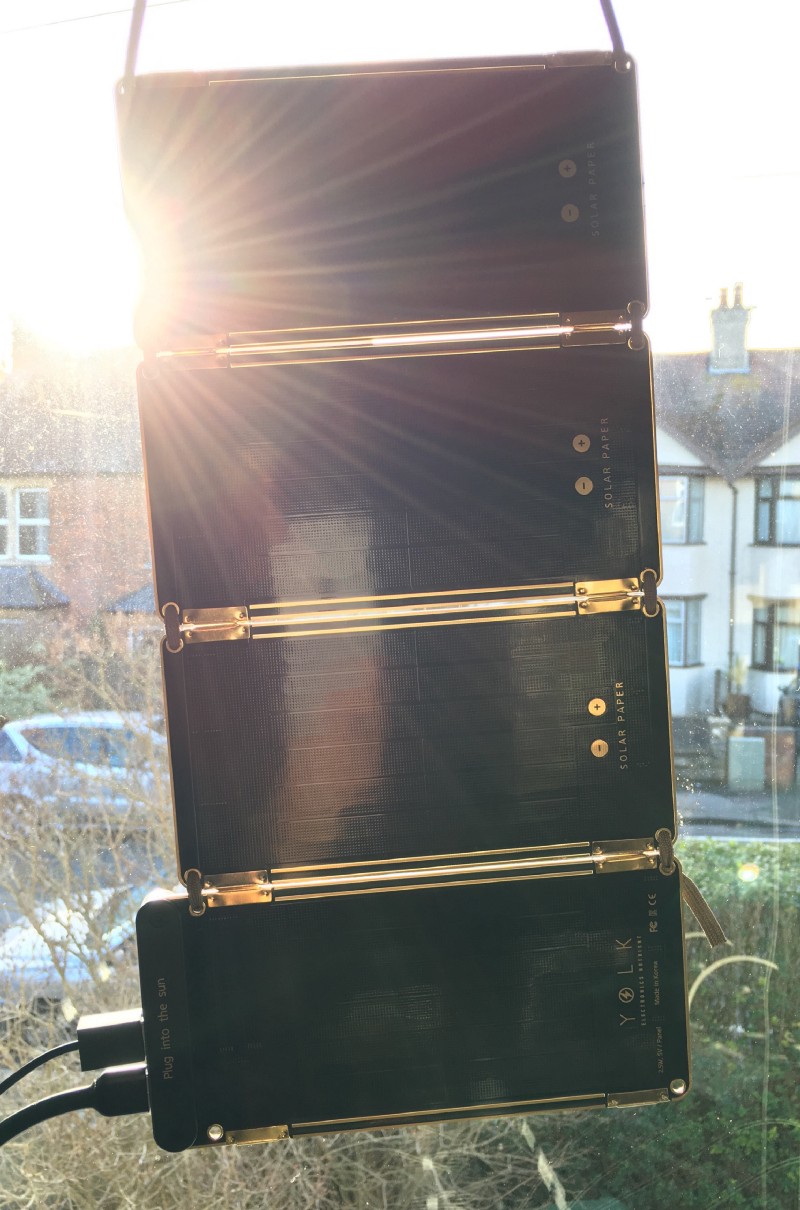Experiments with small-scale solar power in the home
I backed a Kickstarter project, Solar Paper, by Yolk, which provided me with four very thin solar panels that magnetise together. Each panel is rated at 2.5W/5V, and up to six can be chained together.
Living in the UK, a dark and gloomy place, one does not naturally think about solar power, but I wanted to challenge that: could I, in a day, harvest enough solar power to recharge my iPhone 6s+ overnight?
The short answer is, that in January, no, I can’t, but the journey and progress has been interesting.
Initially, I had the panels propped up at an angle on a table in full view of the windows: even with this minimal harvest, I could charge small things, such as a Jawbone hands free, or by Sony SBH-80 Bluetooth headphones. Fun, but not the goal.
I have at my disposal several mophie battery packs: a Powerstation-XL, their rugged Pro, their Mini and their case for the iPhone. I hoped I’d be able to trickle-charge the XL over several days, but sadly it has the kind of circuitry to prevent this silliness, and the same with the Pro.
Scaling back my hopes and dreams, I tried the Juice Pack: even on a tedious, overcast day, I was able to trickle-charge it full. Success! Almost. It only contains enough juice to charge about 70% of my iPhone’s battery. I then tried the mini: whilst this will trickle charge with minimal light, it doesn’t appear to be as good at taking charge as the JP.
Numbers
It’s been hard to gather actual, useful data as partly the Solar Paper provides very little (to keep its own draw low, it has a 3-digit LCD screen), and partly I have no hardware to measure it, but here is a guesstimation:
- On a normal, crappy, overcast day: I can probably harvest about 270mA, which is fine for tiny batteries but not much else.
- On an unusual, lovely, sunny day: I can harvest around 670mA in the midday sun, which while it isn’t enough to charge the large battery packs, it’s enough to charge both smaller models.
Further improvements
I’m considering adding an extra two panels, to help eek out every last bit of solar power I can in a day. It’s an additional cost of $100, and I’m not convinced in the difference it’d make to my already whimsical project.
Panel positioning
It should surprise no-one that the position of the panels makes a difference. I have a bay window, and one of the angles of the bay faces SSE, which is about as good as it gets for the lazy solar farmer who doesn’t want to reposition his panels during the day.
I found that whilst they do work inside, the already-weak light is further weakened, so I’ve opted to string the panels together using gutted paracord, and hang them out of the window. I then run the USB cable back inside though the padding in the double glazing, and charge away. This way, on a particularly good two-day run, I can charge the mini and the JP, and have enough harvested electricity for the night, and some to spare.
Fringe benefits
I get up in the morning, and hang my solar panels out. It makes me feel akin to Mark Watney, stranded on Mars, sweeping his solar panels just so he can live. It’s a stretch I’ll admit, but I enjoy it.



